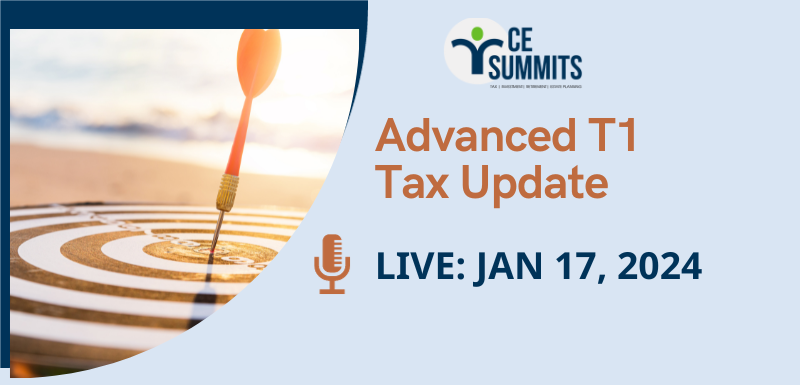Last updated: December 13 2023
Year End Tax Planning: Pay Off Tax Debt Before Dec. 31

Evelyn Jacks
Did you know that of the over 31.5 returns processed in 2023 for the 2022 tax year, close to 7.4million of these returns had a balanced owing for a grand total of almost $57 Billion? That’s an average amount owing per return of $7,729. Owing CRA money can be very expensive – and the interest rate on overdue accounts is expected to rise in January to 10%. Here is how they are calculated and what you can do to free up cash flow ahead of this year’s holiday season by managing the spend to the CRA:
Understanding the Cost of Owing Money to CRA. When you owe money to the CRA on a balance due , you will be charged interest at the quarterly prescribed rate plus 4% more. Currently, and before January 1, that amounts to 9%, compounded daily. That is approximately 9.42% annual interest and it starts on the date that the debt was incurred. For many, it is less expensive to borrow from the bank than from the CRA. Check this out and make the comparisons; then pay off CRA first if you can.
Understanding The Prescribed Rate: The base rate is calculated as the averate rate paid on three-month treasury bills in the first month of the previous quarter, rounded up to the nearest percentage point. The average rate on three-month treasury bills from the Bank of Canada for October 2023 was 5.16%, this would put the base rate at 6% for January 2024, thus:
|
|
2024 |
|
Quarter: |
1 (Jan-Feb-Mar) |
|
Overdue Taxes |
10% |
|
CPP/EI premiums |
10% |
|
Tax Overpayments |
8% |
|
Tax Overpayments (Corporate) |
6% |
When CRA owes you. When CRA owes you money, they’ll pay you interest at the prescribed rate rate of interest plus only 2% more, currently for a total of 8%. As you can see, this is is not  as good as the rate the CRA reserves for itself. Worse, your interest payment only begins at the latest of:
as good as the rate the CRA reserves for itself. Worse, your interest payment only begins at the latest of:
- The date the overpayment occurred
- The end of tax season (120 days after the end of the year) if the return is filed on time
- 30 days after the return is filed if it is filed late
In addition, any interest paid to you by the CRA is taxable and must be reported on your tax return for the year the interest is received.
When you owe quarterly instalment payments. In addition to interest on the balance owing when you file your return, you may be charged instalment interest if your instalments are late or too small. If you discover that your previous instalments for the year are insufficient, you can reduce your instalment interest by making larger instalments for the year, sooner, that is before the June 15, September 15 or December 15 deadline. Farmers and fishers have until December 31, by the way, to make a single instalment remittance for the year, based on 2/3 of their anticipated taxable income. Is it necessary to do so this year? Perhaps not if income has dropped. Do the year end math to find out.
Once you’re notified of interest payable, no further interest will be charged if the total balance due is paid promptly – this generally means within 20 days of the notice.
Planning. The general rule for paying interest of any kind, is that you should whenever possible ensure the interest paid is tax-deductible, such as in the case of earning investment income. Interest paid to the CRA is never deductible and cannot be linked to an income-earning investment, so paying interest to the CRA is to be avoided whenever possible. To ensure you don’t owe interest to the CRA, you should:
- Pay your taxes each year by April 30, even if you’re self-employed and your tax return is not due until June 15
- If you’re required to make instalment payments, make them on time
- If you’re reassessed, respond immediately.If the reassessment is valid, pay the taxes promptly
Also, as much as people love their tax refunds, try not to overpay your taxes at source. Some tips:
- Increase deductions and credits:make larger charitable donations before year end, RRSP contributions within 60 days of the year end, and be sure to write off all the deductions you are entitled to.
- Whenever possible, arrange to have a balance due of less than $3,000 each year when you file your return to stay out of the quarterly tax remittance profile.
- If you are making instalments, estimate your income taxes for the year before making your last instalment (December 15 for most taxpayers; December 31 for farmers and fishers) to ensure you don’t pay it if you don’t have to.
- If you have a refund coming, file as early as possible. Then pay off non-deductible debt, like your CRA balance and consumer credit card debt.At the start of the new year:
- Ensure that your TD1 forms are updated annually to claim the largest personal tax credits possible to increase your take home pay
- Use for T1213 to have tax withholding reduced as much as possible when you have large deductions like an RRSP or moving expenses.
- If you’ve arranged to have tax withheld from payments such as CPP and OAS but now find your income is lower, cancel or reduce the withholding taxes
Additional educational resources: Want to learn more about what forms of interest are deductible? Take Investment Tax Strategies and learn to be conversant in recent tax changes relating to a variety of investment opportunities. You'll also understand strategies and ordering rules using tax-free, tax-deferred, and taxable incomes. You'll use a series of assessment tools to structure your clients' pre- and post-tax investment income and to monitor ongoing results. You'll learn how to manage tax returns by being familiar with tax-free zones, clawback zones and marginal tax rates. You'll provide specific investment income planning approaches for a variety of taxpayer profiles, including young families, students, business owners, and retirees.
https://www.canada.ca/en/revenue-agency/corporate/about-canada-revenue-agency-cra/individual-income-tax-return-statistics.html
A = P(1 + r/n)nt https://www.calculatorsoup.com/calculators/financial/compound-interest-calculator.php
https://www.bankofcanada.ca/rates/interest-rates/t-bill-yields/
